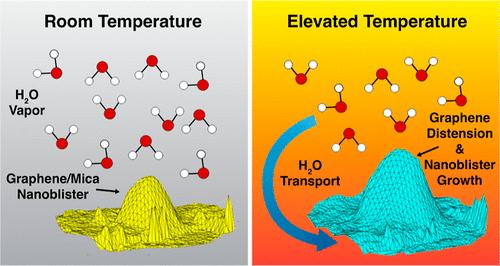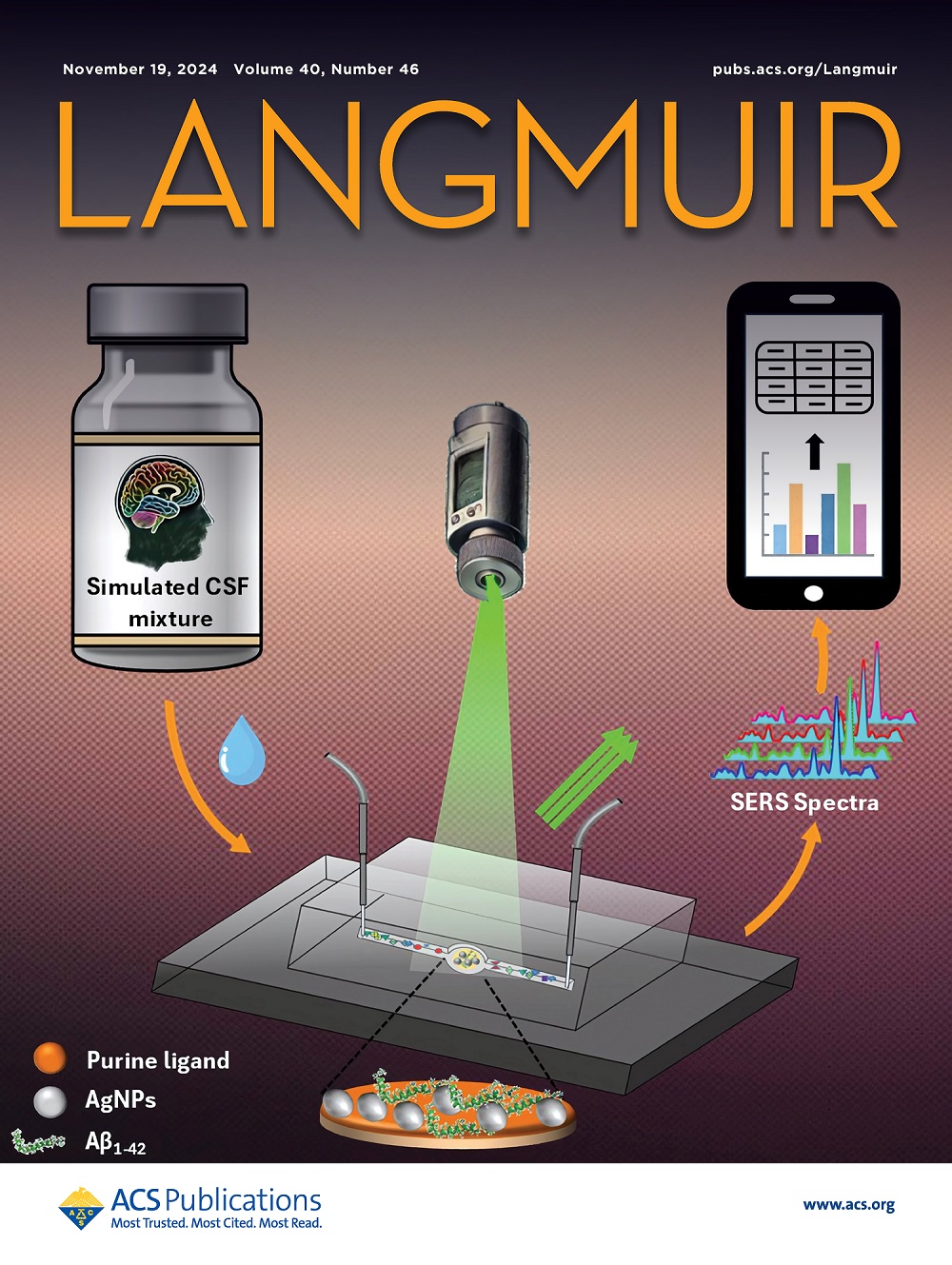Water Transport Dynamics and Kinetic Equilibria in Nanoblisters at the Graphene–Mica Interface
IF 3.7
2区 化学
Q2 CHEMISTRY, MULTIDISCIPLINARY
引用次数: 0
Abstract
Nanoscale reduced volumes with novel properties can be produced from 2D materials like graphene. Mild thermal annealing imposes vast and varied amounts of water intercalation into the graphene–mica interface, resulting in the formation of nanoblisters and impacting the local environment for applications such as reactions confined at the solid–solid interface. Atomic force microscopy imaging (AFM) and micro-Fourier transform infrared (micro-FTIR) spectroscopy characterization after 60–120 °C anneals revealed large volumes of water readily intercalate into graphene–mica nanoblisters, elucidating water transport behavior under mild reaction conditions. The inflation and deflation of graphene nanoblisters throughout the annealing process is attributed to the contraction of the graphene capping layer upon cooling from the annealing temperature, due to the independence of nanoblister aspect ratios from nanoblister volume or surface area. The intercalated water volume was estimated by the distended volumes of each nanoblister and exhibit an equilibrium trend established after 2 h of annealing. This water equilibrium occurs at a variety of temperatures, but higher temperatures favor graphene contraction and distention to accommodate larger volumes of water. Nanoblister volumes are set during the cooling process, indicating a kinetic trapping effect that can influence physical properties and reactivity for all systems confined at the graphene–mica interface.

求助全文
约1分钟内获得全文
求助全文
来源期刊

Langmuir
化学-材料科学:综合
CiteScore
6.50
自引率
10.30%
发文量
1464
审稿时长
2.1 months
期刊介绍:
Langmuir is an interdisciplinary journal publishing articles in the following subject categories:
Colloids: surfactants and self-assembly, dispersions, emulsions, foams
Interfaces: adsorption, reactions, films, forces
Biological Interfaces: biocolloids, biomolecular and biomimetic materials
Materials: nano- and mesostructured materials, polymers, gels, liquid crystals
Electrochemistry: interfacial charge transfer, charge transport, electrocatalysis, electrokinetic phenomena, bioelectrochemistry
Devices and Applications: sensors, fluidics, patterning, catalysis, photonic crystals
However, when high-impact, original work is submitted that does not fit within the above categories, decisions to accept or decline such papers will be based on one criteria: What Would Irving Do?
Langmuir ranks #2 in citations out of 136 journals in the category of Physical Chemistry with 113,157 total citations. The journal received an Impact Factor of 4.384*.
This journal is also indexed in the categories of Materials Science (ranked #1) and Multidisciplinary Chemistry (ranked #5).
 求助内容:
求助内容: 应助结果提醒方式:
应助结果提醒方式:


